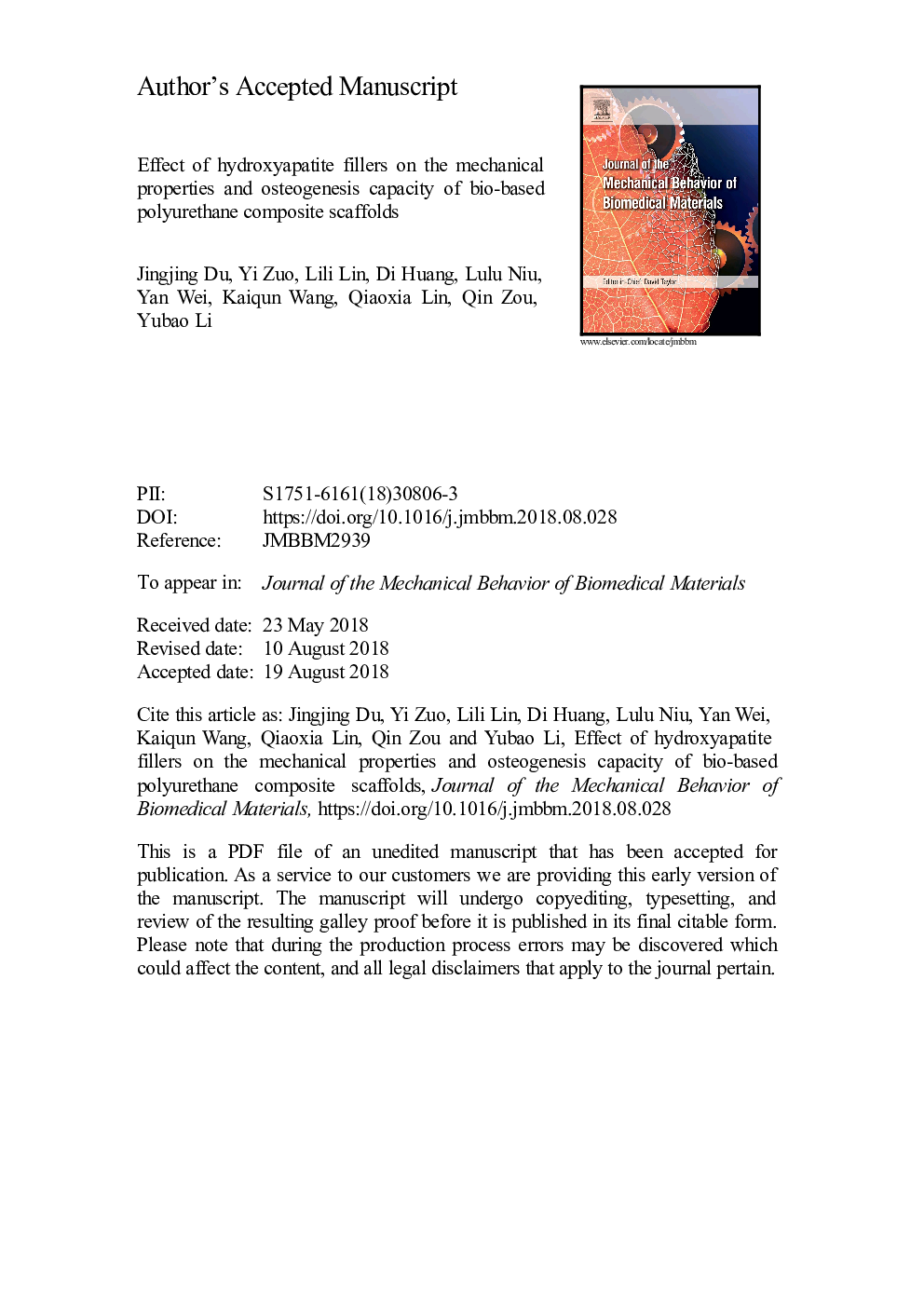| Article ID | Journal | Published Year | Pages | File Type |
|---|---|---|---|---|
| 9952808 | Journal of the Mechanical Behavior of Biomedical Materials | 2018 | 27 Pages |
Abstract
A newly designed hydroxyapatite-polyurethane (HA-PU) composite scaffold was prepared by polymerizing glyceride of castor oil (GCO) with isophorone diisocyanate (IPDI) and HA as fillers. The aim of this study was to determine the effect of HA fillers on the mechanical properties and osteogenesis capacity of the composite scaffolds. The physical and biological properties of the scaffold were evaluated by SEM observation, mechanical testing, cell culture and animal experiments. The results showed that HA fillers enhanced the mechanical properties of PU composite scaffolds such as compressive strength and elastic modulus. The mechanical properties of the scaffolds were seen to increase with increase in HA loading. The compressive strength of composite scaffold with 0â¯wt%, 20â¯wt%, 40â¯wt% of HA was 0.6â¯Â±â¯0.1â¯MPa, 2.1â¯Â±â¯0.1â¯MPa, and 4.6â¯Â±â¯0.3â¯MPa, respectively. In vitro biodegradation studies of scaffolds were carried out. The results showed that all of the scaffolds were susceptible to cholesterol esterase (CE) -catalyzed degradation. HA-PU composite scaffolds exhibited a high affinity to osteoblastic cells and were good template for cell growth and proliferation. When implanted in bone defects of rats, PU scaffolds incorporated HA were biocompatible with the tissue host and had no immune rejection. Moreover, the higher the loading of HA in the composite scaffold, the better chances of osteogenesis. It confirmed that the prepared HA-PU composite scaffolds can be promising candidate for bone repair and bone tissue engineering.
Related Topics
Physical Sciences and Engineering
Engineering
Biomedical Engineering
Authors
Jingjing Du, Yi Zuo, Lili Lin, Di Huang, Lulu Niu, Yan Wei, Kaiqun Wang, Qiaoxia Lin, Qin Zou, Yubao Li,
